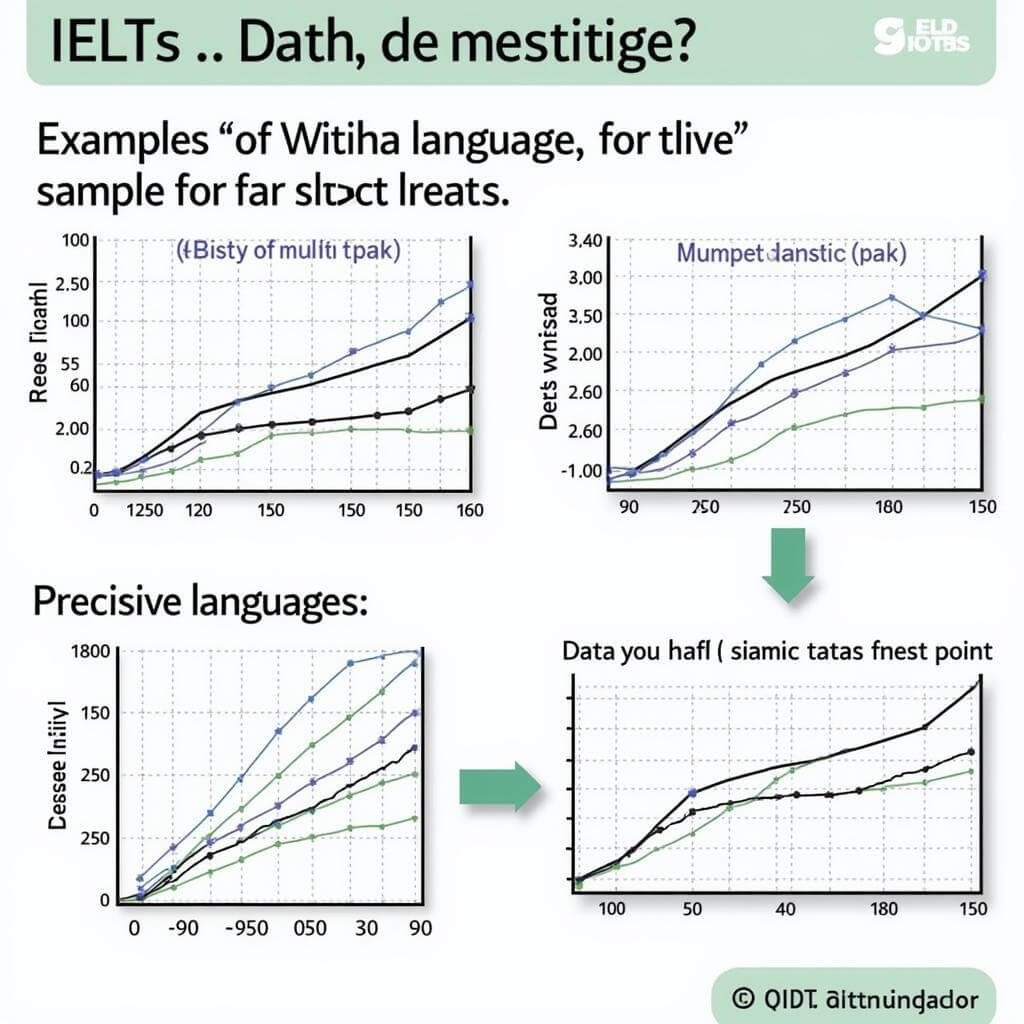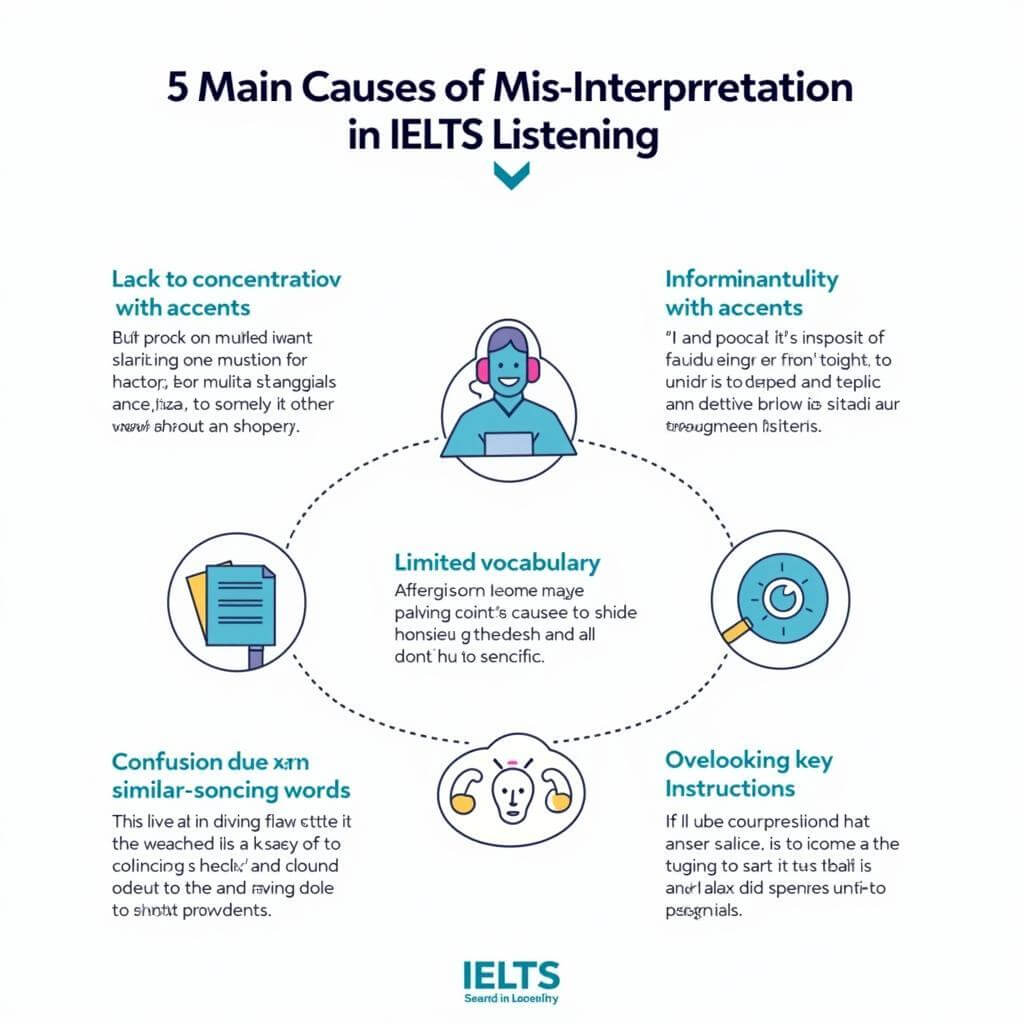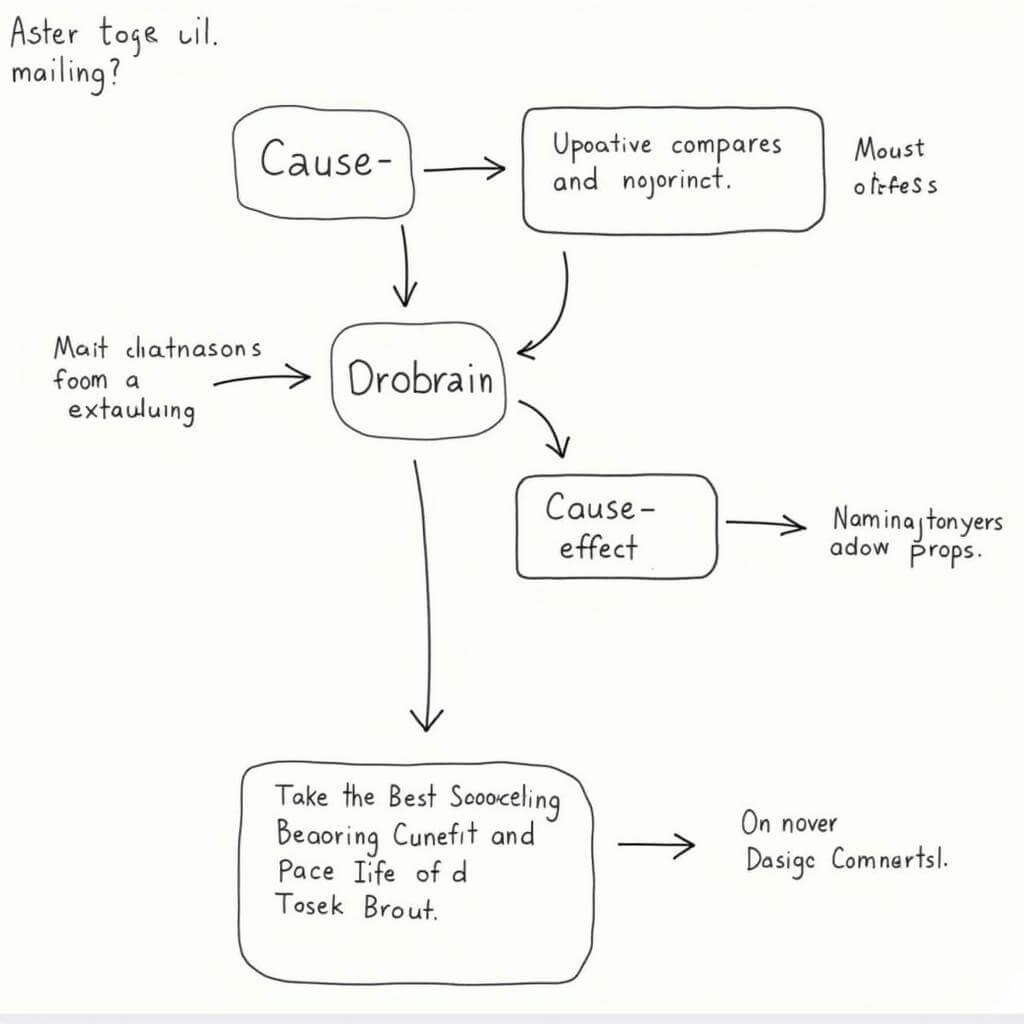The IELTS Reading section can be challenging, but with the right strategies, you can approach it efficiently and boost your score. This comprehensive guide will explore effective techniques to help you tackle the reading test with confidence and precision.
Understanding the IELTS Reading Format
Before diving into strategies, it’s crucial to understand the structure of the IELTS Reading test. The Academic and General Training versions differ slightly:
- Academic: 3 passages, 40 questions, 60 minutes
- General Training: 3 sections, 40 questions, 60 minutes
Regardless of the version, time management is critical. Let’s explore how to make the most of your 60 minutes.
Pre-reading Strategies
1. Skim the Questions First
One of the most effective strategies for tackling tricky questions is to skim the questions before reading the passage. This approach helps you:
- Understand what information to look for
- Focus on relevant details while reading
- Save time by avoiding unnecessary re-reading
2. Predict the Content
After skimming the questions, take a moment to predict what the passage might be about. This mental preparation can significantly improve your reading speed and comprehension.
Active Reading Techniques
1. Use the Skimming and Scanning Method
Skimming and scanning are two essential techniques for efficient reading:
- Skimming: Quickly read through the passage to get a general idea of the content
- Scanning: Search for specific information or keywords related to the questions
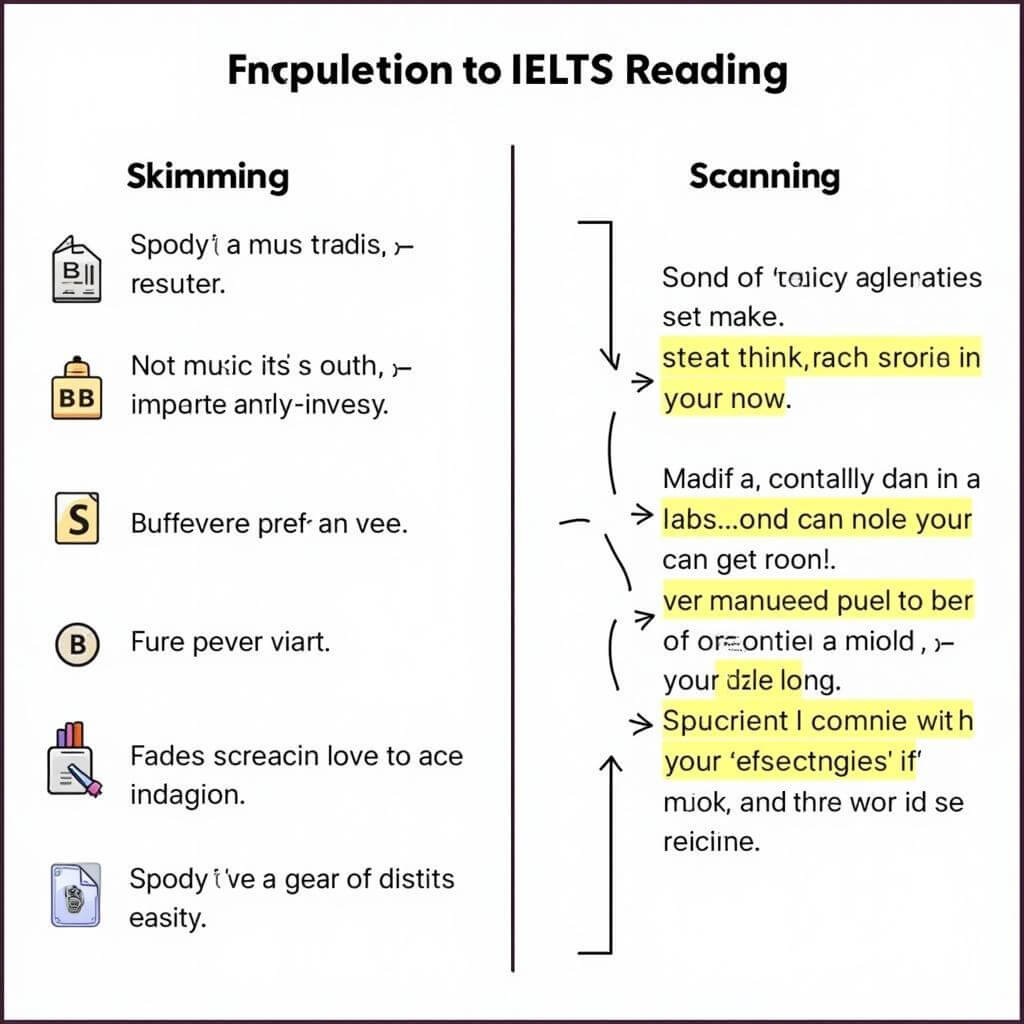 IELTS Reading Skimming and Scanning Technique
IELTS Reading Skimming and Scanning Technique
2. Identify Topic Sentences
Each paragraph typically has a topic sentence that introduces the main idea. Locating these sentences can help you grasp the overall structure and content of the passage quickly.
3. Recognize Signpost Words
Pay attention to signpost words and phrases that indicate:
- Contrast: “however,” “on the other hand”
- Addition: “furthermore,” “moreover”
- Examples: “for instance,” “such as”
- Cause and effect: “consequently,” “as a result”
These words can guide you to important information and help you understand the text’s flow.
Time Management Tips
Effective time management is crucial for success in the IELTS Reading test. Here are some tips to help you make the most of your 60 minutes:
- Allocate 20 minutes per passage or section
- Set aside 2-3 minutes at the end for reviewing answers
- If you’re stuck on a question, move on and come back to it later
- Practice with timed mock tests to improve your pacing
Remember, it’s better to attempt all questions than to leave some unanswered due to poor time management.
Strategies for Different Question Types
Different question types require specific approaches. Let’s look at some strategies for common IELTS Reading question types:
Multiple Choice Questions
When tackling multiple choice questions, consider these strategies for answering tricky multiple-choice items:
- Eliminate obviously incorrect options
- Look for synonyms or paraphrases of the correct answer in the passage
- Be cautious of distractors that partially match the text
Sentence Completion
For sentence completion tasks, try these strategies for approaching IELTS reading sentence completion:
- Read the incomplete sentence carefully
- Identify the grammatical structure required (e.g., noun, verb, adjective)
- Scan the passage for words that fit both grammatically and contextually
True/False/Not Given
This question type can be particularly challenging. Here’s how to approach it:
- Look for explicit statements in the text that support or contradict the given statement
- If you can’t find evidence either way, choose “Not Given”
- Be careful not to use your own knowledge or make assumptions
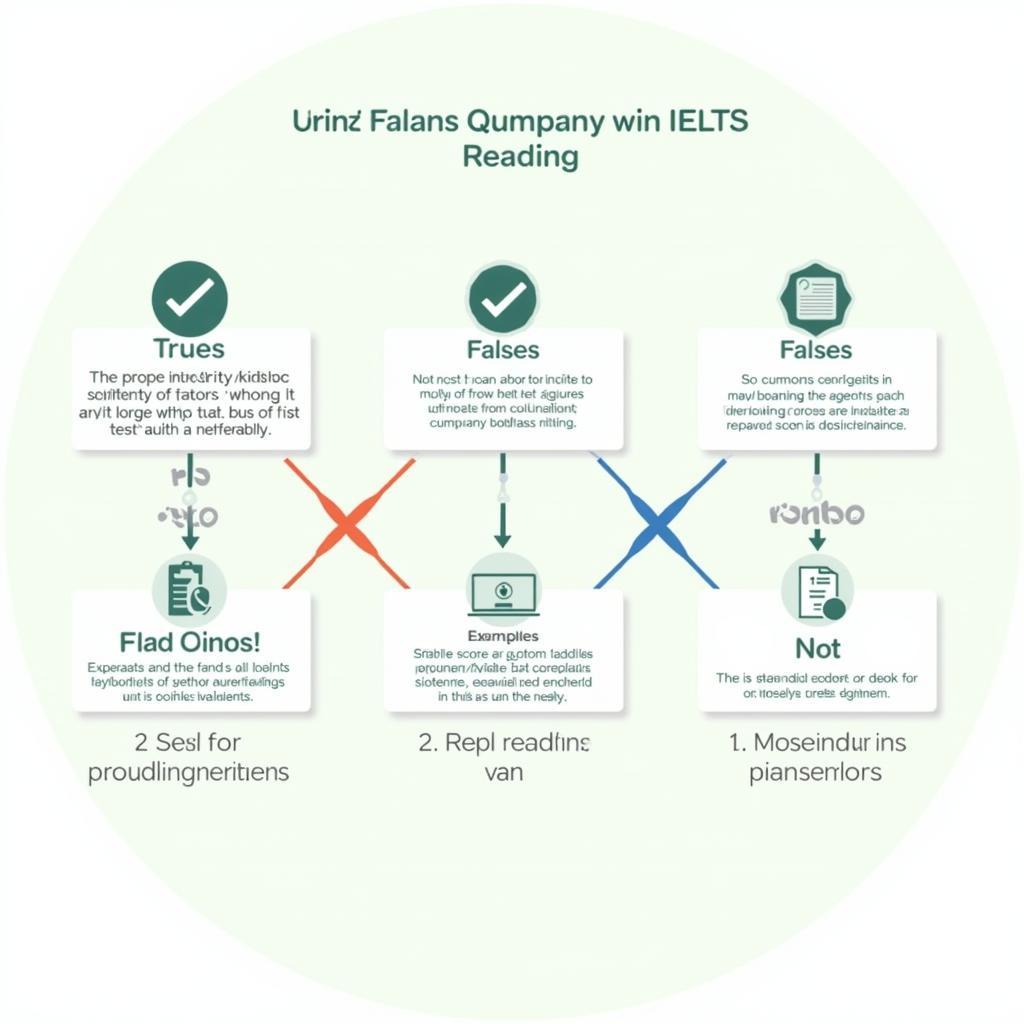 IELTS Reading True/False/Not Given Strategy
IELTS Reading True/False/Not Given Strategy
Dealing with Difficult Passages
Even experienced test-takers can encounter challenging texts. Here are some strategies for handling tricky passages:
- Don’t panic – remember that all test-takers face the same challenges
- Focus on understanding the main ideas rather than every detail
- Use context clues to decipher unfamiliar vocabulary
- Break down complex sentences into smaller, manageable parts
Inference and Understanding Implicit Information
Some questions require you to read between the lines. To improve your ability to infer information, consider these how to approach inference questions strategies:
- Look for clues in the surrounding text
- Consider the author’s tone and purpose
- Draw logical conclusions based on the information provided
Dr. Emma Thompson, an IELTS expert with over 15 years of experience, advises: “Inference questions often trip up test-takers. The key is to base your answers solely on the passage, not your personal knowledge or opinions.”
Practice and Preparation
Consistent practice is the key to improving your IELTS Reading skills. Here are some tips for effective preparation:
- Read a variety of texts in English daily (newspapers, academic journals, magazines)
- Time yourself while practicing to improve speed and efficiency
- Analyze your mistakes and focus on your weak areas
- Use official IELTS practice materials to familiarize yourself with the test format
Conclusion
Mastering the IELTS Reading section requires a combination of effective strategies, time management, and consistent practice. By implementing the strategies for approaching reading efficiently outlined in this guide, you’ll be well-equipped to tackle the IELTS Reading test with confidence and achieve your desired score.
Remember, the key to success lies in your preparation and ability to adapt these strategies to different passages and question types. Keep practicing, stay focused, and approach the test with a positive mindset. Good luck on your IELTS journey!
Frequently Asked Questions
How can I improve my reading speed for the IELTS test?
To improve your reading speed, practice the skimming and scanning techniques regularly. Read a variety of English texts daily and gradually increase your reading pace. Timed practice with IELTS-style passages can also help you become more efficient.
What should I do if I encounter unfamiliar vocabulary in the passage?
Don’t panic if you see unfamiliar words. Try to understand their meaning from the context. Focus on the overall meaning of the sentence or paragraph rather than getting stuck on individual words. Remember, you don’t need to understand every word to answer the questions correctly.
Is it better to read the passage first or look at the questions?
Most experts recommend skimming the questions first to get an idea of what information you need to look for. Then, approach the passage with a purpose, which can save time and improve your focus.
How can I avoid running out of time on the IELTS Reading test?
Practice strict time management. Allocate about 20 minutes per passage and stick to this timeframe. If you’re struggling with a question, move on and come back to it later if time allows. Regular timed practice will help you develop a sense of pacing.
Are there any specific techniques for matching headings questions?
For matching headings questions, skim each paragraph to identify its main idea. Look for topic sentences and key themes. Then, match these with the most appropriate heading. Be careful of distractors that may partially match the content but don’t capture the main idea of the paragraph.
